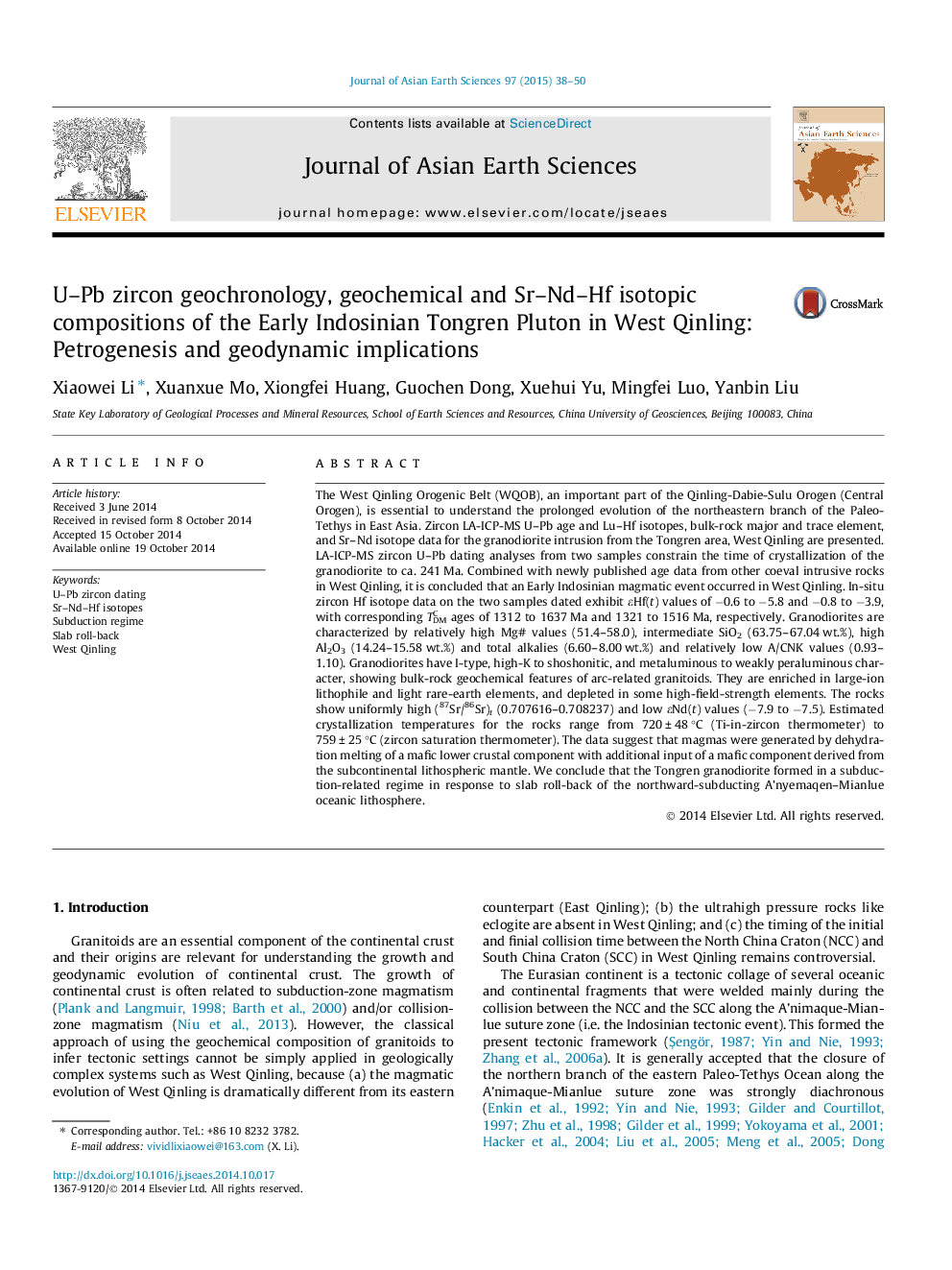| Article ID | Journal | Published Year | Pages | File Type |
|---|---|---|---|---|
| 4730605 | Journal of Asian Earth Sciences | 2015 | 13 Pages |
•The Tongren Pluton was formed in the Middle Triassic (240.5–241.0 Ma).•The Tongren granodiorites were generated by magma mixing between mantle- and crustal-derived melts.•The Tongren Pluton formed in a subduction regime.
The West Qinling Orogenic Belt (WQOB), an important part of the Qinling-Dabie-Sulu Orogen (Central Orogen), is essential to understand the prolonged evolution of the northeastern branch of the Paleo-Tethys in East Asia. Zircon LA-ICP-MS U–Pb age and Lu–Hf isotopes, bulk-rock major and trace element, and Sr–Nd isotope data for the granodiorite intrusion from the Tongren area, West Qinling are presented. LA-ICP-MS zircon U–Pb dating analyses from two samples constrain the time of crystallization of the granodiorite to ca. 241 Ma. Combined with newly published age data from other coeval intrusive rocks in West Qinling, it is concluded that an Early Indosinian magmatic event occurred in West Qinling. In-situ zircon Hf isotope data on the two samples dated exhibit εHf(t) values of −0.6 to −5.8 and −0.8 to −3.9, with corresponding TDMC ages of 1312 to 1637 Ma and 1321 to 1516 Ma, respectively. Granodiorites are characterized by relatively high Mg# values (51.4–58.0), intermediate SiO2 (63.75–67.04 wt.%), high Al2O3 (14.24–15.58 wt.%) and total alkalies (6.60–8.00 wt.%) and relatively low A/CNK values (0.93–1.10). Granodiorites have I-type, high-K to shoshonitic, and metaluminous to weakly peraluminous character, showing bulk-rock geochemical features of arc-related granitoids. They are enriched in large-ion lithophile and light rare-earth elements, and depleted in some high-field-strength elements. The rocks show uniformly high (87Sr/86Sr)t (0.707616–0.708237) and low εNd(t) values (−7.9 to −7.5). Estimated crystallization temperatures for the rocks range from 720 ± 48 °C (Ti-in-zircon thermometer) to 759 ± 25 °C (zircon saturation thermometer). The data suggest that magmas were generated by dehydration melting of a mafic lower crustal component with additional input of a mafic component derived from the subcontinental lithospheric mantle. We conclude that the Tongren granodiorite formed in a subduction-related regime in response to slab roll-back of the northward-subducting A’nyemaqen–Mianlue oceanic lithosphere.
